With Melty Blood Type Lumina, the game is being reintroduced to a whole new audience- just like its VN counterpart, Tsukihime Remake. Since the last release for Melty Blood, developer French Bread has had good success with the Under Night series- and the result is a Melty Blood title that holds up pretty well as a good fighting game for newcomers.
Like many people, I’d only heard of Melty Blood in legend- the fighting game so niche that they hosted a tournament for it in a hotel bathroom, yet beloved enough that the community was still alive, if not hard to find.
Lots of Tools For Players
Right off the bat, I love Melty Blood Type Lumina’s training mode. The mode features something not many fighting games have- a frame counter. As someone who plays charge characters like Big Band and Leo Whitefang, this is invaluable for knowing exactly how long you need to hold an input to get your big moves out. Seriously, how this stayed exclusive to Under-Night and Melty Blood is beyond me.
On the less technical end, the game also sports an impressive character customizer– this isn’t like Soul Calibur or Dead or Alive, where you can physically change the character’s model. Instead, it’s more of a sprite editor, letting you make your own custom palettes to stand out at your locals. There are some changes you can make- such as giving characters high socks or even tights- but it’s all stuff that can be drawn on the sprite instead of changing the overall silhouette.
Rapid Decision-Making Combat
For people who might be used to Guilty Gear Strive’s more toned-down flavor of anime, you’d be surprised with Melty Blood Type Lumina. It’s a fast game, where characters treat the inherent rules of fighting games as more of suggestions.
The best way to describe it would be like this: Strive feels like a game of rock paper scissors, but everyone cheats. Meanwhile Type Lumina instead feels like a game of Rock Paper Scissors Lizard Spock. You’re constantly making decisions against your opponent, thanks largely in part to the game’s Shield mechanic. On top of your regular block, your characters have an entire button dedicated to Shield- a counter button that lets you react in 3 ways after it connects, including a teleport that works regardless of your distance.

Of course, shielding isn’t perfect- for one, they’re subject to the same high-low guess that regular blocking has to deal with. They’re also vulnerable to grabs, so you really want to be careful not to overuse your shield- a common mistake in the lower ranks of online is players who become overreliant on a low shield on wakeup, often eating 2-3 grabs before they get the hint that they’re being read like a book.
There’s also the game’s pre-round scramble. Unlike many fighting games that lock your position at the start of a game, you get full mobility at the start of Melty Blood Type Lumina. That means even the start of the game is now a strict game of positioning yourself- do you want to move out of their range? Or try to get them closer to the corner. Heck, the fact that you get full mobility means you could, timed correctly, start your match already in the air, starting your assault on the enemy.
And that’s just the universal mechanics- lots of characters have their own gimmicks that you’ll have to learn even if you don’t play them, just by virtue of not wanting to be humiliated in some guy’s clip collection on YouTube.
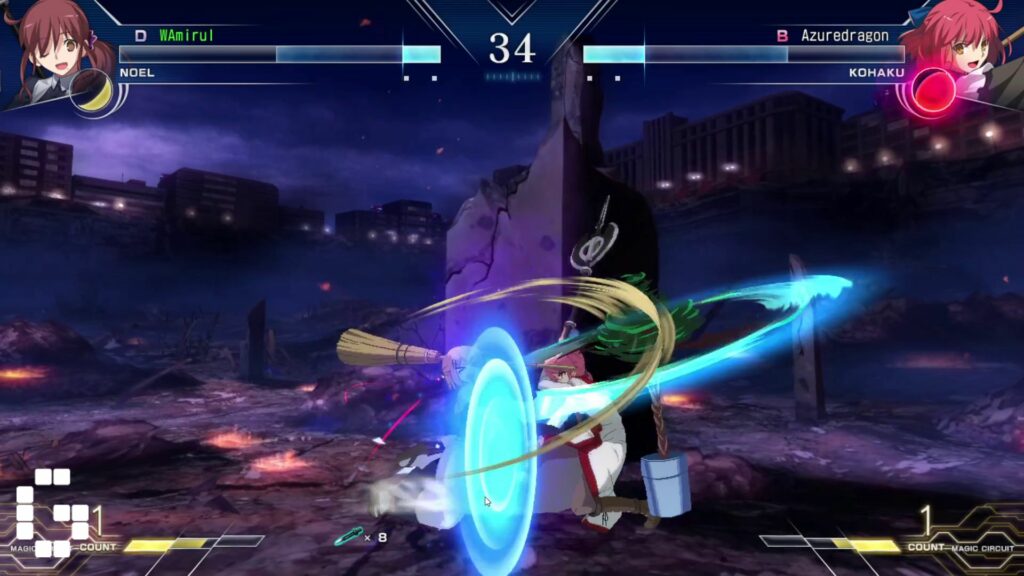
The best example of this would be Kohaku, a setup character with incredible pressure. From dropping bombs to magical houseplants, the last thing you want is Kohaku to be knocking you down. One of her supers is actually two supers, even, changing properties depending if you pressed or held the input. On a hold, it becomes a grab which means you can totally force your opponent into guessing to shield or not when dealing with her.
Beginner Concessions
Of course, Melty Blood Type Lumina has plenty of concessions for newer players too. At the heart of this game is a Rapid Beat autocombo system: any time you press one of the three attack buttons more than once, it chains into a pre-set combo. It’s great for new players, because even if you’re not doing mixups, your combos are still up to snuff.
The downside to this is if you’re in the awkward growing phase of trying to learn the game- many of your mispressed inputs will trigger the Rapid Beat, and you may face a lot of frustration wondering why you can’t consistently get some moves out, especially if it was a bad choice to go for the autocombo in that situation.
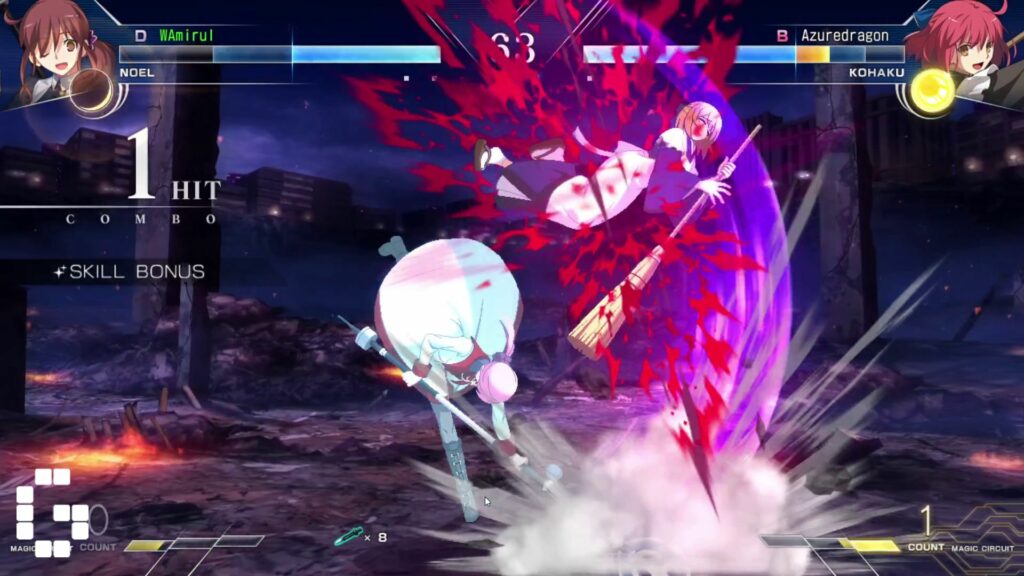
There’s also the game’s Moon Skills- fast, easy to use special moves that deal a ton of damage. These can be pressed with the B and C buttons plus pre-assigned directions. Ever since Granblue Fantasy Versus, I’ve really liked the idea of one-input special moves. The only problem with Melty Blood’s is that unlike Granblue where they tell you at the top of the screen what every button does, Melty Blood buries it in the command list, and instead of a cooldown it eats your Moon gauge if used recklessly.
That being said, it does run into the same problems Granblue does, which is that making your special moves so easily accessible makes them *very* strong. For example, Noel has an invincible-on-startup DP as one of her Moon Skills, when DPs are usually gated to difficult inputs such as the dreaded Shoryuken motion or a charge motion. As a result Noel’s an incredibly strong character- and that’s just one of the buttons you’ll have at your disposal.
One other thing I really like is the game’s big finishers, the Last Arcs. These are no easy feat to pull off, but not for any technical reason. Instead, all you need to activate them is all 4 buttons, or to perform a shield counter while in the game’s Blood Heat mode. The real challenge here is the buy-in: you need 4 magic circuits, which you’ll only get by having lost a round.
Anime Fighter Nonsense
Blood Heat, Moon Gauge, these are all part of what the anime fighter is best known for- lots and lots of systems. At any point during Melty Blood Type Lumina, you have two meters to watch for- these are your Magic Circuits, which act as your meter for supers and EX moves, as well as a Moon Gauge- that lets you activate things like Moon Skills as well as the Moon Drive.

Moon Drive puts you into a state which gives you lots of small individual bonuses- like more mobility, as well as health recovery. These are great for when you need to turn things around, but they’re totally an advanced skill, since you’ll need to first assess what your character can do, then hit the moon drive when you decide you need more options.
That being said it’s not totally useless for new players, since it also enhances the moon skills as well.
As someone who loves anime fighters, I’m glad that Melty Blood has these. It’s really cool seeing all the systems at play, especially since they’re not as esoteric as the GRID system from Under Night. At the end of the day it all boils back down to your gameplay, and there’s still something to use regardless of your skill level.
Rollback But Not The Good Kind
Unfortunately, one of the weakest parts of Melty Blood Type Lumina is its online play. While it does use rollback netcode, there’s a lot of bizarre decisions being made. For one, it uses a one-sided rollback, so many games end up being cases of one player says the game went great for them while the other person complains about slowdowns and teleporting.
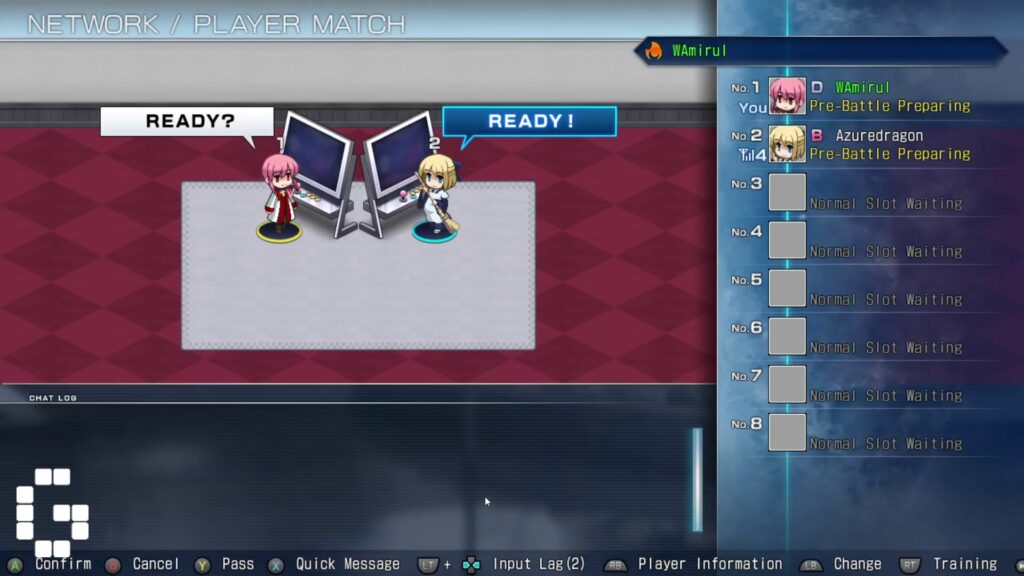
The other is its lobby- you can have up to 8 players at once in a lobby, but only 2 of them can be fighting at any one time. It feels like the game was going for an esports angle- everyone else in the match can spectate the big match currently going on.
Except the problem is that’s not always the case in any kind of lobby, and most people just want to play their games and rotate partners, and that’s hard to do if only two people can play together at any one time.
The game’s matchmaking isn’t that great either- unlike Strive’s ranked towers, you’re assigned a grade and are just told to set your search filters to the rank range you want to fight.
It feels disappointing, because it’s a rude awakening that rollback netcode isn’t the magic keyword to make people write articles about how revolutionary your online. There’s still lots of things to consider, most importantly UX, and it’s almost weird to think that after all the ribbing given to Strive’s lobby system it’s still somehow better than Type Lumina’s just by virtue of letting you play more than one match at the same time.
Burn Your Magic Circuits

At the end of the day, Melty Blood Type Lumina is still an incredibly solid fighting game, even despite its flaws.
It’s a shame that the online is such a downer on the game because it’s otherwise amazing- the combat is intricate at all levels, in a way that makes it so no matter what, you’re playing guessing games with your opponent. The removal of thigns like moon-types makes each character feel much more realized, since the developers have to decide what every character is going to be instead of letting some other moon versions of characters be better than others.
That being said, once it’s safe to have offline tournaments again, expect Type Lumina to have a much larger scene, thanks to the aforementioned accessibility for newer players. It’s always great to have more games in a scene, and I for one welcome this hyper agressive anime airdasher.
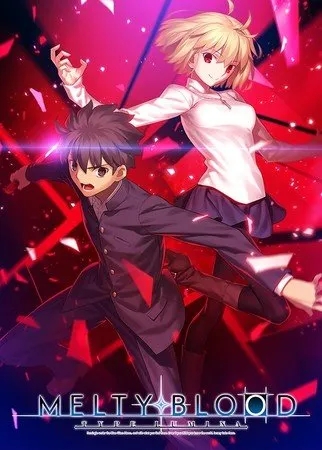
Join Us!
We are recruiting! If you want to break into the gaming media industry, don't miss out on the golden opportunity. Find out more: Malaysia. Overseas.The Review
PROS
- The combat is incredible and deep
- Great customization and learning tools
- Incredibly welcoming to new players
CONS
- Why is the Online... like that








![[EXCLUSIVE] Inside Japan’s Indie Game Revolution – An Interview with BitSummit Organizer Masahiko Murakami](https://cdn.gamerbraves.com/2025/05/BitSummit-Orgainzer_Interview_FI-360x180.jpg)

![[EXCLUSIVE] The Art of Adaptation: Developer Interview Details the OVERLORD Mobile RPG Lord of Nazarick](https://cdn.gamerbraves.com/2025/05/Lord-of-Nazarick_Interview_FI-360x180.jpg)
![[EXCLUSIVE] Taking Gundam in Bold New Directions – Interview with GQuuuuuuX Director Kazuya Tsurumaki](https://cdn.gamerbraves.com/2025/04/Kazuya-Tsurumaki_Interview_FI-1-360x180.jpg)


![[SEA Exclusive] From Shadows to Shipwrecks – Jennifer English Talks About Bringing Emotional Depth to Clair Obscur: Expedition 33](https://cdn.gamerbraves.com/2025/04/Clair-Obscur-Jennifer-English_Interview_FI-360x180.jpg)

![[EXCLUSIVE] Do the Game Interview – An Intimate Look at the Challenges of Game Development](https://cdn.gamerbraves.com/2025/04/Do-the-Game_Interview_FI-1-360x180.jpg)
![[EXCLUSIVE] Interview with the Minds Behind of Den of Wolves – 10 Chambers’ New Sci-Fi Heist FPS](https://cdn.gamerbraves.com/2025/04/Den-of-Wolves_Interview_FI-360x180.jpg)


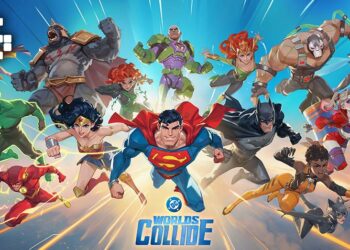





![[GUIDE] SD Gundam G Generation Eternal Unit Tier List](https://cdn.gamerbraves.com/2025/04/SD-Gundam-G-Generation-Eternal-Tier-List_Review_FI-360x180.jpg)
![[GUIDE] Clair Obscur: Expedition 33 Tier List – From Gustave to Verso: Who Deserves Your Party Slot?](https://cdn.gamerbraves.com/2025/04/Clari-Obscur-Expedition-33-Character-Tier-List_Guide_FI-360x180.jpg)
![[GUIDE] Mastering Clair Obscur: Expedition 33 – Essential Tips for Success](https://cdn.gamerbraves.com/2025/04/Expedition-33_Guide_FI-360x180.jpg)